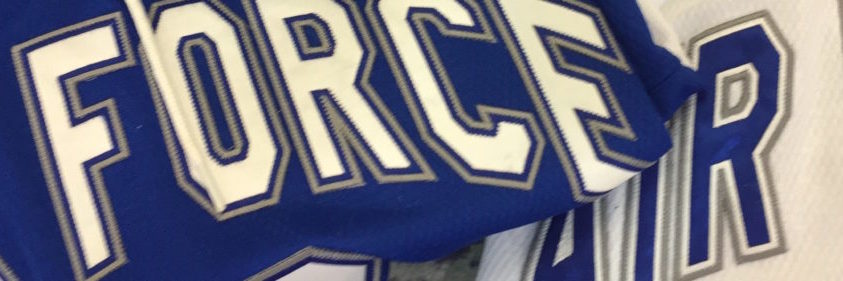Playing a man down hasn’t been the disadvantage for Air Force recently that one might assume.
The Falcons enter this weekend’s Atlantic Hockey series against Mercyhurst fourth in Division I hockey in penalty killing and are in the midst of a run of 22 consecutive kills and 29 of their past 30.
“It’s funny,” senior co-captain Matt Koch said this week. “It doesn’t feel like it.”
Aside from a two-game malfunction at AIC two weekends ago, which the coaching staff probably flushed somewhere over the Eastern Time Zone on the flight back, the Falcons (8-6, 8-4 AHC) have asserted themselves atop the league, winning seven of their past nine games.
And the penalty kill, which has been effective nearly 88 percent of the time, has a lot to do with that.
“We’ve always had a strong penalty kill, so we’ve got some good fundamentals,” senior assistant captain Kyle Haak said. “We know what it looks like when it’s going right.”
This Falcons’ senior class has never finished lower than 11th nationally in the PK or killed off fewer than 84 percent of the man advantages against it. Coaches will take those odds far more often than not.
And Air Force is doing it with quite a few new characters in the cast – graduated seniors Dylan Abood, Phil Boje, Erik Baskin and Tyler Ledford were PK mainstays in recent years.
“We have quite a few guys who didn’t kill last year who are filling roles this year,” Haak said. “They see what right looks like, how to kill properly. They can step right in, and they have.”
It also helps that Air Force rarely takes even five penalties in a game (it averages less than 9 minutes in the box per game this season). That’s a big advantage in the highly congested world of college hockey.
Breaking it down
We’ve established the Falcons are good at this, but how do they do it?
Koch, a defenseman, and Haak, a center, shed some light on it.

Kyle Haak
It obviously starts in a defensive zone face-off circle. Air Force often will employ two centers – Haak and fellow senior Evan Feno are likely candidates if they’re not coming off a long shift.
“Winning the draw is huge,” Haak said. “We want to get it out of our zone as fast as possible. If we have two centers on and can clear it, one will go off for a change.”
Koch said one key for the defensemen to get that immediate clear is positioning.
“When we get that first touch, we’re making those clears,” he said. “Whether we win or lose, (defense partner) Zack (Mirageas) and I have been trying to tackle where the best position is.
“That comes down to film study and everything we work on during the week. We spend a lot of time on special teams.”
Once the puck leaves the Falcons’ zone, whether immediately or after a few passes or a shot, the real fun begins.
“We’ll try to get pressure up ice, force them to release a puck so we can set up three-point pressure,” Haak said.

Goalie Billy Christopoulos is the penalty kill’s last line of defense, and a good one at that. Photo courtesy of Paat Kelly and Air Force Athletics
Both players said neutral zone pressure is of paramount importance – make the opponent regroup.
The next time you’re at a game, watch for this. When the Falcons are successfully pressuring a team, they get a penalty killer on the puck, one above it and someone below it. It’s easy to say but takes a lot of energy and effort to accomplish. That’s why 30 seconds can be an eternity on a kill.
If a foe makes a clean entry and can get set up, a few more imperatives come into play.
“We need good gaps to not allow them to have a big space to operate in,” Koch said. “We have to get in lanes and block shots.”
When all else fails, the Falcons do have an ace they can play.
“It helps to have a good goalie that can make saves,” Haak said of senior Billy Christopoulos.
©First Line Editorial 2017-18





